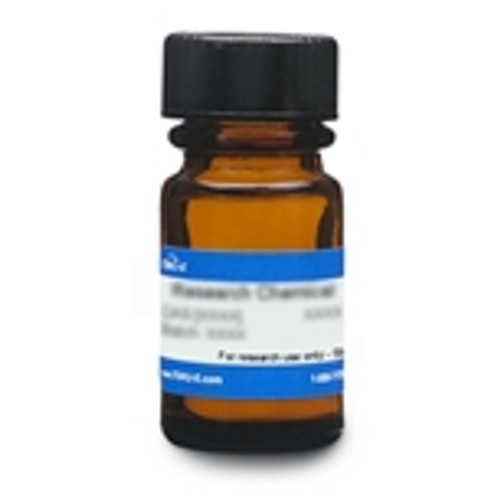Fosfomycin Calcium is a broad-spectrum phosphonic acid epoxide antibiotic that inhibits bacterial cell wall synthesis. It is used against bacteria causing urinary tract and intestinal infections and is commonly used in susceptibility testing. It was discovered in Spain in 1969 (Spanish Penicillin and Antibiotics Company) from Streptomyces fradiae but may also be manufactured synthetically. Fosfomycin is a phosphoenolpyruvate analog and has a phosphonic group and an epoxide ring.
We also offer:
| Mechanism of Action | Fosfomycin is a phosphoenolpyruvate analog that irreversibly inhibits enolpyruvate transferase, preventing the formation of N-acetylmuramic acid, which is an essential element of the peptidoglycan cell wall. It has an extremely low molecular weight, and shows almost no binding to proteins. It is chemically unrelated to any other known antibiotic. |
| Spectrum | Active against Gram-positive and Gram-negative bacteria |
| Microbiology Applications | Fosfomycin is commonly used in clinical in vitro microbiological antimicrobial susceptibility tests (panels, discs, and MIC strips) against Gram-positive, and Gram-negative microbial isolates. Medical microbiologists use AST results to recommend antibiotic treatment options. Representative MIC values include:
AST methods include agar dilution, broth dilution, disk diffusion, and Etest techniques (Falagas et al, 2010). |
| Eukaryotic Cell Culture Applications | Fosfomycin has immunomodulatory effects, altering lymphocyte, monocyte and neutrophil function. It affects the inflammatory cytokine response in vitro. It can suppress the production of tumor necrosis factor alpha (TNF-a), interleukin-1B and IL-1a. In vitro infection models of biofilm have been used, and Fosfomycin alone or in combination, has the ability to penetrate biofilms.
Researchers studied chronic biofilm formation by P. aeruginosa due to cystic fibrobris. P. aeruginosa biofilms were grown on cultured human CF-derived airway cells (CFBE41o-). CFU per ml was reduced 4 log10 units when given Fosfomycin in combination with Tobramycin at 256 mg/L. When given at 64 mg/L, initial biofilm formation was inhibited (Anderson et al, 2013). |
| Molecular Formula | C3H5CaO4P∙H2O |
| References |
Anderson GG, Kenney TF, Macleod DL, Henig NR, and O'Toole GA (2013) Eradication of Pseudomonas aeruginosa biofilms on cultured airway cells by a Fosfomycin/tobramycin antibiotic combination. Pathog Dis. 2013 67(1):39-45 PMD 23620118 Falagas ME et al (2010) Antimicrobial susceptibility of Gram-positive non-urinary isolates to Fosfomycin. Int J Antimicrob Agents 35:497–499 PMID 20226634 Falagas ME, Vouloumanou EK, Samonis G, Vardakas KZ (2016) Fosfomycin. Clin. Microbiol. Rev. 29(2):321-347 PMID 26960938 Hendin D et al (1969) Phosphonomycin, a new antibiotic produced by strains of Streptomyes. Sci. 166:122-123 PMID 5809587 Michalopoulos, AS, Livaditis IG and Gougoutas V (2011) The revival of Fosfomycin. J. Infect. Dis. 15(11): e732 - e739 PMID 21945848 |






